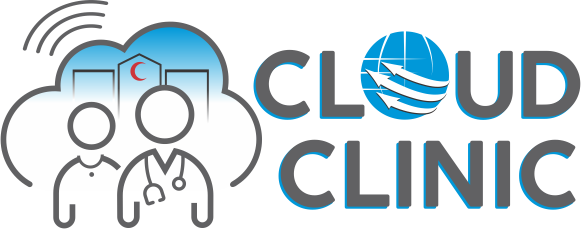Rural areas are deprived of premium healthcare. The common challenges such as the nearest doctor being miles away, and getting there means taking time off work, arranging for transportation, and sometimes traveling on rough, unpaved roads have put many lives at risk. For many people in rural communities, this is a daily reality. Healthcare access has long been a challenge in these areas, but thanks to telemedicine, this is changing.
Telemedicine, the practice of providing medical care remotely using technology, is revolutionizing healthcare access for rural populations. With a simple internet connection and a device like a smartphone or computer, patients can now consult with healthcare professionals without leaving their homes. This transformation is not only convenient but also life-saving.
The Challenges of Healthcare in Rural Areas
Rural communities face unique healthcare challenges. Distance is a major barrier; many rural residents live far from medical facilities. This distance leads to delayed treatments and, in some cases, untreated conditions. Additionally, rural areas often suffer from a shortage of healthcare providers. Specialists, in particular, are scarce, forcing patients to travel even further for specialized care.
Economic factors also play a significant role. Many rural residents have lower incomes and lack health insurance, making it difficult to afford healthcare services. Transportation costs add to the financial burden, deterring people from seeking necessary medical attention.
Moreover, the social stigma associated with certain health issues, especially mental health, prevents individuals from seeking help. The close-knit nature of rural communities means that privacy is a concern, and people may avoid going to local healthcare facilities out of fear of being judged.
Telemedicine: Bridging the Gap
Telemedicine is addressing these challenges head-on. By using video calls, online chats, and remote monitoring, patients can receive medical consultations and follow-ups without the need to travel. This convenience is particularly beneficial for chronic disease management, mental health support, and routine check-ups.
For instance, a person with diabetes in a remote area can have regular virtual appointments with a specialist to manage their condition. This consistent monitoring helps in keeping the disease under control and prevents complications. Similarly, mental health services are more accessible through telemedicine, allowing individuals to receive therapy or counseling privately from their homes.
Telemedicine also plays a critical role during emergencies. Patients can quickly connect with healthcare professionals for initial assessments and advice on whether they need to visit a hospital. This immediate access to care can be crucial in life-threatening situations.
The impact of telemedicine on rural communities is profound. From regular medicine adjustments to timely consultations, it has greatly helped in reducing the outcome of diseases in rural areas. Telemedicine not only works with chronic conditions, but it has also assisted people in villages with seasonal diseases and viral infections.
The Future of Telemedicine in Rural Healthcare
The future of telemedicine in rural healthcare looks promising. As technology continues to advance, the reach and capabilities of telemedicine will expand. Faster internet connections and improved telecommunication infrastructure will make virtual consultations more accessible and reliable.
Integration of artificial intelligence (AI) and machine learning can further enhance telemedicine. AI can assist in diagnosing conditions based on patient data, making remote consultations more efficient. Wearable devices that monitor vital signs and health conditions in real time can send data directly to healthcare providers, enabling proactive and personalized care.
Moreover, policy changes and increased funding for telemedicine initiatives will play a crucial role in sustaining and growing these services. Governments and healthcare organizations are recognizing the importance of telemedicine in bridging the healthcare gap in rural areas and are investing in necessary infrastructure and training.
Why Telemedicine Is The Future?
Telemedicine offers numerous benefits that enhance healthcare delivery and access, especially for those in rural areas. Here are some key advantages:
Improved Access to Care
Remote Consultations: Patients can receive medical advice and treatment without traveling long distances.
Specialist Availability: Rural residents can access specialists who might not be available locally.
Convenience and Comfort
Home-Based Care: Patients can consult doctors from the comfort of their own homes, which is especially beneficial for those with mobility issues.
Reduced Travel Time: Saves time and costs associated with traveling to healthcare facilities.
Timely Medical Attention
Quick Access: Immediate consultations for urgent health issues can prevent complications.
Chronic Disease Management: Regular monitoring and follow-ups help in managing chronic conditions effectively.
Cost-Effectiveness
Lower Costs: Reduces expenses related to transportation and in-person visits.
Affordable Care: Virtual consultations can be less expensive than traditional office visits.
Enhanced Patient Engagement
Patient Education: Easy access to health information and education through online platforms.
Continuous Monitoring: Wearable devices and remote monitoring tools keep patients engaged in their health management.
Increased Privacy and Comfort
Mental Health Services: Patients can access mental health support discreetly, reducing the stigma associated with visiting a therapist.
Confidential Care: Ensures privacy for those concerned about being seen at local healthcare facilities.
Better Health Outcomes
Preventive Care: Early detection and preventive measures can be implemented more easily.
Reduced Hospital Admissions: Timely care and regular monitoring help in reducing unnecessary hospital visits.
Flexibility for Healthcare Providers
Work-Life Balance: Doctors can manage their schedules more efficiently and provide care from various locations.
Expanded Reach: Healthcare providers can serve a larger patient base beyond their local area.
Technological Advancements
AI and Machine Learning: Integration of AI can aid in diagnostics and personalized treatment plans.
Advanced Monitoring: Real-time health data collection through wearable devices and apps enhances patient care.
Resilience in Emergencies
Pandemic Response: Telemedicine proved crucial during COVID-19, maintaining healthcare delivery while minimizing infection risks.
Natural Disasters: Ensures continuity of care when physical access to healthcare facilities is disrupted.
Conclusion
Telemedicine is transforming healthcare access in rural areas, providing much-needed medical care to those who previously faced significant barriers. By overcoming challenges related to distance, provider shortages, and economic constraints, telemedicine is changing lives and improving health outcomes. As technology continues to evolve, the future of telemedicine looks bright, promising even greater advancements and accessibility. For rural communities, this means a healthier, more connected future where quality healthcare is just a click away.







